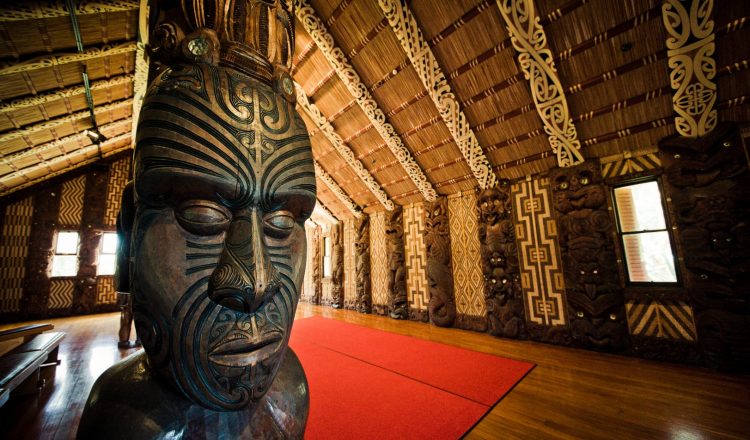카파 하카와 공연 예술
카파 하카(Kapa haka)는 군무라고 번역할 수 있는데 이는 또한 마오리족의 공연 예술 자체를 묘사하기도 합니다. 공연 예술은 성스러운 유산과 문화적 정체성을 표현하는 역할을 하기 때문에 마오리족과 다른 폴리네시아 문화권에서 매우 중요합니다. 카파 하카를 구성하는 노래와 춤은 수백 년에 걸쳐 개발/전수되어 왔으며 과거의 다양한 마오리 문화를 엿볼 수 있습니다.
카파하카는 합창, 춤, 표정 연기, 자세, 싱크로나이즈를 망라하는 예술입니다. 카파하카가 다른 문화 공연 예술과 다른 점은 백병전과 무기 기술과 같은 전쟁을 형상화한다는 것입니다. 비슷한 예로 음악, 곡예, 춤이 결합된 아프리카계 브라질 문화에 속하는 카포에이라(Capoeira)나 중국의 타이찌(Tai Chi)를 비교해볼 수 있습니다.
카파 하카는 20분-40분 정도 소요되며 다양한 노래와 춤을 선보입니다. 마오리인들은 특별한 날을 위해 카파하카를 공연하며, 뉴질랜드와 세계 각지에서 가장 재능 있는 공연자를 가리기 위한 대회가 열리기도 합니다. 춤과 노래에 수반되는 음악은 보통 사람의 목소리를 이용하는데, 발을 구르거나 팔이나 가슴을 찰싹 때리는 등 신체를 타악기처럼 사용해 소리를 만듭니다. 악기로는 기타와 소라껍질이 흔합니다.
다른 예술 장르와 마찬가지로 카파 하카 역시 시간이 지나면서 진화했습니다. 전통적으로 노래를 멈추거나 공연이 중단되는 것은 매우 나쁜 징조로 여겨졌습니다. 그래서 여러 사람들이 함께 노래부르며 숨을 고르는 가수를 위해 공연이 끊기지 않도록 다른 사람들이 계속 노래합니다. 현대 마오리족의 창법과 음악은 특히 화음 합창법을 도입한 유럽의 선교사들로부터 영향을 받았습니다. 음악은 마오리 문화의 필수적인 부분이며, 오늘날까지도 꾸준히 새로운 노래가 마오리어로 작곡되고 있습니다.

















































